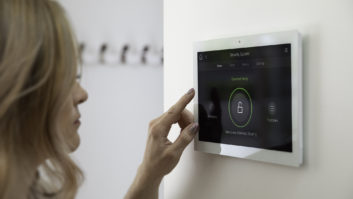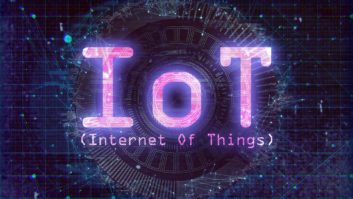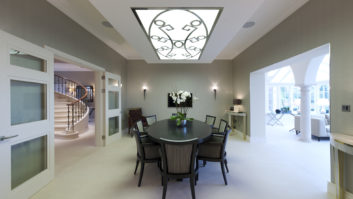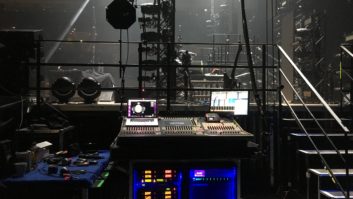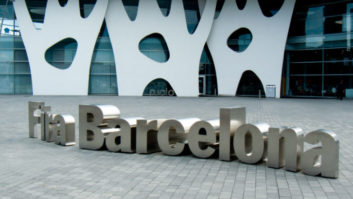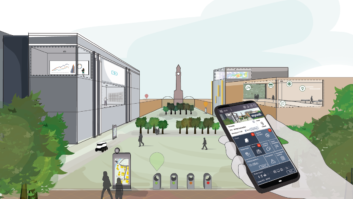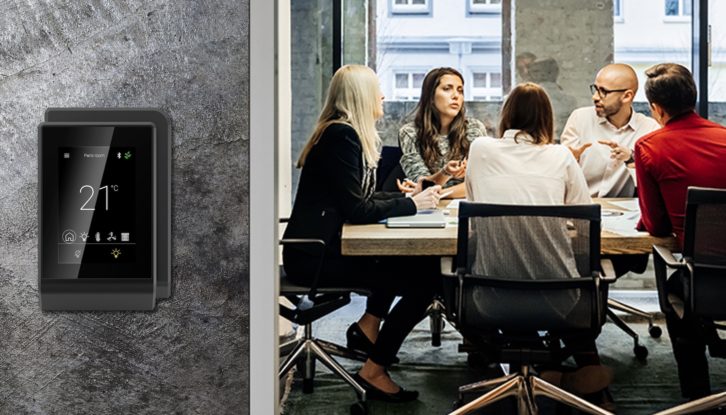
With a somewhat mixed landscape (as outlined in the first half of this feature), it comes as little surprise to find that we still seem to be some distance from a situation in which building systems are truly integrated.
“The definition of smart buildings would need these systems to be connected,” says Vanti CEO Mike Brooman. “Currently, most building systems are unaware of each other – that is, they don’t provide additional functionality to users when they are ‘joined up’. However, an increasing number of systems have well-developed interfaces and APIs to allow other systems or whole-building technology platforms to ‘hook in’ and read/write/update data or control functionality.”
Simon Ward, director of sales, UK and Ireland at Distech Controls, picks up on the theme of APIs and their potential. “There has been a siloed approach to different systems in the past – but this is changing,” he claims. “Systems integrators, specifiers and end users are all beginning to see the benefit of having a whole system approach for their buildings. Such integration can now be achieved directly with the use of a RESTful API interface. REST – REpresentational State Transfer – is a standard way to enable IT web services to interact with software applications. With this level of integration, taking a unified approach will ensure that we can actively enhance and maintain the system infrastructure during the building life cycle.”
“On the whole,” agrees Alwyn Howie, head of enterprise solutions at Siemens, “building systems are still islands. The market tends to segregate base sub systems into one bucket, and additional technology such as network services/external apps into another bucket. IoT platforms such as MindSphere will help bring all points of data to align systems.”
“IP-based systems for AV, control and pretty much everything else are now more or less the norm”
MindSphere is the cloud-based, open IoT operating system from Siemens that connects products, plants, systems, and machines, designed to enable users to harness the data generated by the IoT with advanced analytics.
“Our vision for any smart building is that it’s intelligent enough to respond to the needs of its users,” says Oliver Iltisberger, managing director of ABB’s smart buildings business. “To be truly smart, buildings need to be joined up – and connectivity and interoperability are key to unlocking this potential. If solutions don’t ‘talk’ to each other and operate in isolation, then you won’t reap the benefits that a truly smart building can deliver. That’s why having a common operating platform – like ABB Ability – and joined up solutions are so important.”
In all the discussion of the interoperability standards that will enable the intelligent buildings of the future, there is, perhaps, surprising little talk of a seemingly obvious solution – an omission that Keith Jones, a partner at system design and documentation services company designflow, rectifies. “IP-based systems for AV, control and pretty much everything else are now more or less the norm,” he points out, “and should definitely be the standard to design towards.”
Tightly intertwined
It will be interesting to see how that plays out in the smart/intelligent buildings industry given, as Jones says, AV’s headlong rush to embrace IP – with the broadcast industry in close attendance. The omission of IP from the conversation is even stranger, given that few disagree that the futures of smart/intelligent buildings and the IoT are tightly intertwined.
“The IoT – coupled with clever engineering – has been the key driver in allowing smart buildings to become a reality,” says Iltisberger. “IoT and greater connectivity has developed closer links between humans and the buildings we inhabit, giving us stronger control over all elements, from switching off lights in empty offices to making sure that buildings are secure.”
“The IoT has already delivered a huge leap forwards in the technology behind building control,” he adds. “For example, an increasing number of IP devices and sensors – from those that measure temperature, brightness and CO2 metrics – have led to new technology that improves the management of energy usage.”
“We are a strong proponent of IoT within smart buildings,” confirms Christian Bjerrum-Niese, head of sales and business development at UbiqiSense. “Technology cycles in the building sector are notoriously long. Instead of just being relevant to smart buildings under planning or construction, inexpensive IoT devices allow for refurbishment of existing buildings with short-term ROI.”
Brooman, however, has an interesting perspective. “IoT goes hand-in-hand with smart buildings,” he comments. “The IoT on its own is a tool for implementing great in-building experiences – but it’s not the silver bullet for making buildings smart.”
Silver bullet?
That raises the question of whether there is indeed a silver bullet. As the journey continues towards its destination of truly intelligent buildings, many see wide scale sensor deployment, big data, artificial intelligence and advanced analytics having a key role to play. Sensors will routinely and automatically collect huge amounts of data, with AI technologies helping to make sense of that data – providing vital feedback, either internally within the system or externally to a building manager.
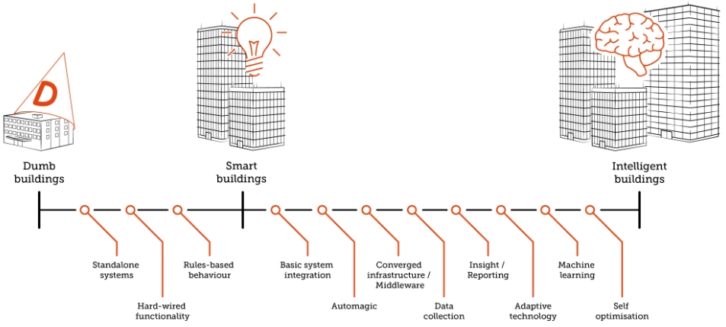
“Big data, automated analytics, pervasive wireless sensing and cloud services are together radically changing the quality of information that can be collected, processed and analysed in real-time to enable better services provision,” says Distech’s Ward. “It means we can make more informed decisions about the operation of a building and that covers energy and cost savings as well as occupancy comfort and well-being.”
“Big data/AI with automation through pre-defined agreed criteria applications is an exciting area,” enthuses Siemens’ Howie. “Self-learning and self-managing buildings will be the promised land. Building managers, operators and service suppliers struggle with delivering accurate and proactive delivery to keep the buildings running at day one condition. Big data/AI can and will help to deliver constant learning and improvement for all parties as smart buildings evolve.”
“Harnessing big data is key to understanding how smart buildings are performing,” echoes Iltisberger. “But, it’s how you use this data that is key. What we’ve done at ABB is to take this big data and turn it into easy to use, bite-size intelligence for facilities and building managers. So, they can easily see from their app if there’s been a security breach, if the heating system isn’t working in a meeting room or if the lights have been left on, before it becomes a major issue.”
Exciting times
There’s the promise, then, of exciting times ahead – but Vanti’s Brooman thinks we’re still some way away. “Proper big data and AI deployments in buildings are both a long way off,” he says. “Again, these are being marketed as silver bullets to solve people’s problems. However: ask anyone who has tried to implement either solution in a building: “Were you able to get good quality, meaningful data?” Other than in a set of very rare cases, the answer is ‘no’ because the necessary infrastructure and software platforms have not been put in place to facilitate data extraction.”
The smart/intelligent buildings market is, then, one that is in transition – and that unquestionably holds significant potential, given its forecast growth. Is it an opportunity for integrators thinking of diversifying?
designflow’s Jones believes it is. His company has historically focused almost exclusively on offering its system design services to integrators in the residential market – but 2019 sees it broadening its reach to helping design commercial projects.
“For integrators, it can be a difficult field to break into as commercial projects generally require a lot more documentation and discipline than residential,” he says. “This side of things is actually something that we help a lot of our clients out with: our job is to specify, design and document projects for integrators.”
Expertise needed
“There is,” nods Ward, “a lot of expertise needed to install and integrate a smart building.”
For Howie, it’s all about sales, technology and project delivery skills. “Understand your customers’ business needs in order to create a compelling case for your solution; be prepared to adapt to evolving technologies; and be aware that, often, you’re not just delivering systems – you may be transforming the customer’s operation,” he advises.
Of course, the smart buildings industry is far from alone in seeing the huge potential of combining sensors, big data and analytics – but finding itself unable, as yet, to move from potential to implementation. That, in turn, means that the truly self-managing building is unlikely to be with us for some time. And, even if the technology were in place, plenty believe that there will be many organisations who will continue to want to have a real person in charge of their buildings – even if the tools at his/her disposal are far more sophisticated than is the case today. It looks as if, unlike switchboard operator, lamplighters and copy typists, the building manager’s job is safe for the foreseeable future.
www.abb.com
www.designflow.co
www.distech-controls.com
www.siemens.com
www.ubiqisense.com
www.vanti.co.uk
